Indian Polity: October 2024 Current Affairs | General Test Preparation for CUET UG - CUET Commerce PDF Download
What is Overseas Citizen of India (OCI)?
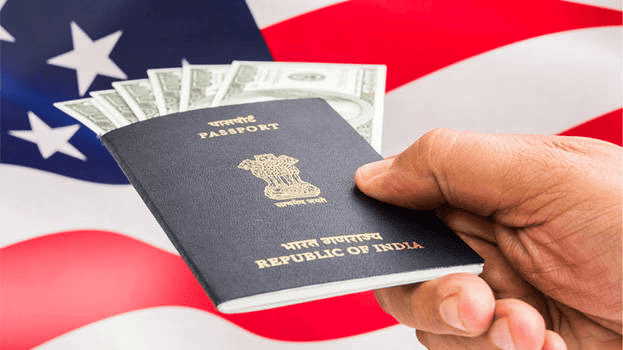
Why In News?
Recently, the Consulate General of India in New York has clarified that rumours circulating on social media regarding Overseas Citizen of India (OCIs) becoming reclassified as “foreigners” are false.
About Overseas Citizen of India
- The Overseas Citizen of India (OCI) scheme was initiated in August 2005.
- This program allows for the registration of all Persons of Indian Origin (PIOs) who were citizens of India on January 26, 1950, or thereafter, or were eligible to become citizens of India on that date.
Who cannot be an OCI?
- An applicant is ineligible for an OCI card if their parents or grandparents have ever been citizens of Pakistan or Bangladesh.
- Foreign military personnel, whether active or retired, are also not eligible for OCI.
- However, a foreign spouse of an Indian citizen or of an OCI holder, whose marriage has been registered and has lasted for at least two years, can apply for an OCI card.
Advantages of OCI card holders
- An OCI card holder receives a lifelong multiple entry, multi-purpose visa for visiting India.
- OCI holders are exempt from registering with local police authorities for any duration of stay in India.
- OCI card holders do not have the right to vote or to become members of legislative bodies or hold certain constitutional posts, such as President, Vice President, or Judge of the Supreme Court or High Court.
- They generally cannot hold government employment.
Latest rules regarding OCIs
- On March 4, 2021, the Ministry of Home Affairs issued a gazette notification amending the rules for OCI card holders.
- These amendments require OCI card holders to obtain permission or a permit to visit protected areas in India.
- The same restrictions apply to foreign nationals visiting states like Jammu & Kashmir and Arunachal Pradesh.
- OCIs must secure a special permit for activities such as research, missionary work, Tablighi activities, journalistic endeavors, or visiting areas classified as protected, restricted, or prohibited.
- OCI holders are treated equally to foreign nationals regarding all other economic, financial, and educational fields, although prior circulars by the Reserve Bank of India under FEMA remain applicable.
What is Pravasi Bharatiya Diwas?
- Pravasi Bharatiya Diwas, also known as Non-Resident Indian (NRI) Day, is celebrated on January 9.
- This day honors the contributions and achievements of the overseas Indian community towards the development of India.
- It is a flagship event organized by the Ministry of External Affairs.
10 years of Swachh Bharat Mission
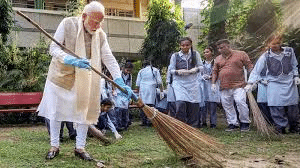
Why in news?
On October 2, 2024, the Swachh Bharat Mission (SBM) celebrated its 10th anniversary. This initiative was launched in October 2014 by the Ministry of Drinking Water and Sanitation along with the Ministry of Housing and Urban Affairs. The mission is divided into two components: SBM-Gramin, which focuses on rural areas, and SBM-Urban, aimed at urban centers.
Aim
The primary goal of the mission is to achieve Open Defecation Free (ODF) status for India by constructing both individual and community toilets, as well as implementing effective waste management systems in schools and anganwadi centers. A location can be certified as ODF if, at any given time of the day, there is no one found defecating in the open.
Since its inception, significant progress has been made under the mission:
- Over 10 crore toilets have been constructed across the country.
- As of October 2019, nearly 6 lakh villages have been recognized as ODF.
- In 2021, upon completing five years, the government introduced SBM 2.0, which aims to create garbage-free cities, manage faecal sludge, tackle plastic waste, and enhance greywater management.
- All 4,715 Urban Local Bodies (ULBs) in urban India have achieved ODF status.
- This comprehensive initiative not only focuses on sanitation but also seeks to improve the overall quality of life in both rural and urban settings, promoting health and hygiene among the population.
National Health Account (NHA) Estimates 2020-21 and 2021-22
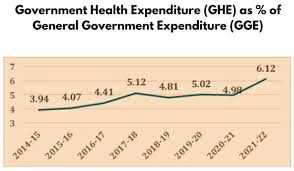
Why in News?
Recently, the Union Ministry of Health and Family Welfare has published the estimates for the fiscal years 2020-21 and 2021-22. These reports are the eighth and ninth editions of the NHA series, which provide a detailed analysis of the nation's healthcare expenditure.
What are the Key Findings of NHA Estimates for 2020-21 and 2021-22?
- Rising Government Health Expenditure (GHE): The proportion of GDP allocated to GHE increased from 1.13% in 2014-15 to 1.84% in 2021-22. The share of GHE in General Government Expenditure (GGE) rose from 3.94% in 2014-15 to 6.12% in 2021-22. This upward trend reflects the government's dedication to enhancing public healthcare services, especially in light of the Covid-19 pandemic.
- Decline in Out-of-Pocket Expenditure (OOPE): The share of Total Health Expenditure (THE) attributed to out-of-pocket payments decreased from 62.6% in 2014-15 to 39.4% in 2021-22. This decline is linked to government initiatives aimed at increasing public health funding and improving healthcare accessibility, ultimately alleviating the financial burden on individuals. The government's contribution to THE rose from 29% in 2014-15 to 48% in 2021-22, indicating a greater reliance on public healthcare services.
- Increased Share of Government Health Expenditure in Total Health Expenditure (THE): The share of GHE within THE increased from 29% in 2014-15 to 48% in 2021-22, which signifies reduced financial strain on the populace. This rise in GHE indicates enhanced access to medical services and improved financial protection for individuals.
- Total Health Expenditure: India's THE was estimated at Rs. 7,39,327 crores, accounting for 3.73% of GDP, with per capita spending of Rs. 5,436 in 2020-21. By 2021-22, THE increased to Rs. 9,04,461 crores, representing 3.83% of GDP, with a per capita expenditure of Rs. 6,602.
- Growth in Social Security Expenditure (SSE) on Health: There has been a positive trend in health financing, with SSE's share in THE rising from 5.7% in 2014-15 to 8.7% in 2021-22. This includes government-funded health insurance and medical reimbursements for government employees, directly reducing out-of-pocket payments for healthcare. A robust social security system helps avert financial hardship and poverty when accessing essential health services.
- Distribution of Current Health Expenditure: In 2020-21, the Union Government's share of Current Health Expenditure (CHE) was Rs. 81,772 crores (12.33% of CHE), and state governments contributed Rs. 1,38,944 crores (20.94% of CHE). By 2021-22, the Union Government's CHE share grew to Rs. 1,25,854 crores (15.94%), and state contributions increased to Rs. 1,71,952 crores (21.77%).
What are National Health Accounts?
- The NHA estimates come from the System of Health Accounts (SHA) framework, which is recognized worldwide and was set up by the World Health Organization in 2011.
- This framework allows for comparisons between countries by offering a consistent way to track and report healthcare spending.
- The NHA shows how money flows within India's health system, detailing how funds are raised, distributed across the healthcare sector, and spent on healthcare services.
- India's NHA estimates follow the National Health Accounts Guidelines for India from 2016, with updates made to reflect changes in the healthcare landscape.
- The methods and estimates are regularly updated to stay in line with the changing Indian health system and its policies.
- Continuous efforts are made to improve data availability, refine estimation methods, and incorporate feedback from stakeholders.
Conclusion
- The National Health Account estimates for 2020-21 and 2021-22 offer important information about how much India is spending on healthcare.
- There is a noticeable increase in the government's health spending, which shows a commitment to improving public health services.
- Out-of-pocket costs for individuals are going down, making healthcare more affordable for everyone.
- There is also a rise in social security spending, which helps support the health needs of the population.
- These trends indicate that the healthcare system is becoming more resilient and inclusive, aiming to serve a wider range of people.
- The government's efforts are focused on reducing financial barriers to healthcare, ensuring that more people can access necessary services.
- There is an ongoing push to improve healthcare infrastructure, which is crucial for better service delivery.
- The commitment to Universal Health Coverage is being supported by continuous reforms and strong financial resources.
SC Strike Down ‘Casteist’ Provisions in India’s Prison Manuals

Why in News?
Recently, the Supreme Court ruled that the caste-based division of labor within prisons is "unconstitutional," marking a significant move towards eliminating institutional biases within India's correctional system. The Court declared several provisions in state prison manuals that upheld caste distinctions as violations of prisoners' fundamental rights.
How do Prison Manuals Reinforce Colonial Stereotypes?
- Colonial Legacy: The now-repealed Criminal Tribes Act of 1871 allowed the British colonial authorities to label certain marginalized communities as "criminal tribes" based on the unfounded stereotype that they were inherently "born criminals."
- Denotified Tribes: Following the repeal of the Act, these communities were reclassified as "denotified tribes," but they continued to be labeled as "habitual offenders" despite lacking any convictions.
- Example from West Bengal: The Supreme Court pointed out Rule 404 of the West Bengal Jail Code, which stipulates that a convict overseeing prison duties can only be a night guard if they do not belong to tribes considered to have a "strong natural tendency to escape," such as wandering tribes.
- Other States' Manuals: In states like Andhra Pradesh, Tamil Nadu, and Kerala, prison manuals define "habitual criminals" as those who, by "habit," commit crimes like theft or forgery, regardless of any previous convictions.
- Restrictions on Labor: In Andhra Pradesh, individuals from "wandering or criminal tribes" are categorized similarly to those with "bad or dangerous character," preventing their employment outside prison labor.
- Perpetuation of Discrimination: The Court noted that these classifications continue to reinforce colonial-era caste-based discrimination, exacerbating the social and economic marginalization of these communities.
Examples of Caste-Based Discrimination in Prisons:
- Tamil Nadu Prison: At Palayamkottai Central Jail, there was a segregation of Thevars, Nadars, and Pallars into distinct sections, showcasing caste-based barrack segregation.
- Rajasthan Prison: The Rajasthan Prison Rules of 1951 assigned latrine duties specifically to the "Mehtar" caste (a Scheduled Caste community), while higher-caste Hindu prisoners were allocated to kitchen duties.
How are Fundamental Rights of Prisoners Violated?
- Caste Classification Limitation: The Supreme Court asserted that caste should only be a classification criterion if it benefits those suffering from caste discrimination, such as through affirmative action.
- Reinforcement of Caste Differences: Segregating prisoners based on caste fosters animosity and must be abolished, as it contradicts Article 14 of the Constitution concerning equality.
- Direct and Indirect Discrimination: The Court highlighted instances of direct discrimination, such as assigning cleaning roles to lower castes while reserving tasks like cooking for higher castes, violating Article 15(1).
- Violation of Equality: Differentiating prisoners based on "habit," "custom," or "natural tendencies" undermines the principles of substantive equality and perpetuates discrimination.
- Untouchability Practices: The Court identified prison rules that required food to be prepared by a "suitable caste" and assigned "menial duties" to certain communities as practices akin to untouchability, prohibited under Article 17.
- Right to Life and Dignity: The Supreme Court underscored that rules limiting the rehabilitation of marginalized prisoners violate their rights to life, dignity, and equal treatment.
What were the Directives Issued by SC?
- Amend Prison Manuals: The Court ordered all states and union territories to revise their prison manuals and rules within three months to remove discriminatory practices.
- Removal of Caste References: The mandates included eliminating the "caste column" and any caste-related references from the records of undertrials and convicts in prisons.
- Model Prison Manual and Act Issues: The Model Prison Manual of 2016 and the Model Prisons and Correctional Services Act of 2023 were criticized for allowing caste discrimination and vague definitions that perpetuate stereotypes.
- Compliance Monitoring: District legal services authorities and boards of visitors were assigned the responsibility to conduct regular inspections to ensure adherence to these directives.
- Police Instructions: Police were directed not to arbitrarily arrest members of denotified tribes, following guidelines established in previous Supreme Court rulings.
Conclusion
- The recent decision by the Supreme Court to end these unfair practices is an important move towards achieving real equality in prisons.
- By requiring the elimination of caste mentions, updating old definitions, and tackling biases against marginalized communities, the court has emphasized the need for dignity, fairness, and reform for all inmates.
- This ruling opens the door to a more just and inclusive prison system in India.
Offence of ‘Abetment of Suicide’
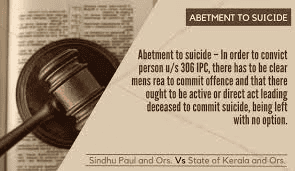
Why in News?
Recently, the Supreme Court has provided a detailed interpretation of the offence of ‘abetment of suicide’, specifying the criteria that determine guilt in such cases.
What is Abetment of Suicide?
- Abetment of suicide is classified as an offence under:
- Section 306 of the Indian Penal Code (IPC)
- Section 108 of the Bharatiya Nyaya Sanhita (BNS)
- The penalty for this offence can be up to 10 years of imprisonment along with a fine.
- According to Section 45 of the Bharatiya Nyaya Sanhita (BNS), abetment occurs when an individual:
- Instigates another person to commit an act
- Conspires with others to perform an act that leads to an illegal deed or omission
- Intentionally aids in the execution of the act.
SC’s Interpretation:
- The Supreme Court made it clear that the crime requires direct and shocking encouragement or incitement that leaves a person feeling they have no choice but to take their own life.
- It set out guidelines to help determine if someone faced intolerable harassment or emotional abuse that could lead them to consider suicide:
- The accused caused severe harassment or suffering, making the victim see suicide as their only way out.
- The accused took advantage of the victim's emotional weaknesses, making them feel worthless or unwanted in life.
- The accused threatened to harm the victim's family or put them in a situation of financial distress.
- The accused made false allegations that tarnished the victim's reputation, resulting in public humiliation and loss of dignity.
Related Cases:
- M Mohan v The State, 2011: The Supreme Court determined that to establish abetment of suicide under Section 306 IPC, it is essential to demonstrate a direct act with intent that leaves the victim with no choice but suicide.
- Ude Singh v State of Haryana, 2019: The Supreme Court stated that proving abetment of suicide hinges on the specifics of the case, necessitating either direct or indirect incitement that leaves the individual no alternative but to commit suicide.
Government Initiatives for Suicide Prevention:
- Mental Healthcare Act (MHA), 2017
- KIRAN Helpline
- Manodarpan Initiative
- National Suicide Prevention Strategy 2022
Supreme Court Upholds Section 6A of Citizenship Act

Why in news?
Recently, the Supreme Court upheld the constitutionality of Section 6A of the Citizenship Act 1955, which allows Bangladeshi immigrants living in Assam to obtain Indian citizenship. The court found that this provision aligns with the constitutional value of fraternity. The ruling emphasized that the principle of fraternity should not be applied selectively; it cannot be used to label certain groups in Assam as 'illegal immigrants' while granting rights to others.
What is the Supreme Court’s Ruling?
Majority Opinion:
- Reaffirming Constitutional Validity: The court reaffirmed that Section 6A does not breach Articles 6 and 7 of the Constitution, which set 26 January 1950 as the cut-off date for granting citizenship to migrants from East and West Pakistan. Section 6A has a later cut-off date, allowing it to operate independently from earlier provisions.
- Justification for Cut-off Date: The cut-off date of 25 March 1971 is significant as it marks the day the Pakistani Army began Operation Searchlight, which aimed to suppress the Bangladeshi nationalist movement.
- Protection of Culture: The Court noted that the petitioners did not successfully demonstrate that Section 6A infringes upon the ability of Assamese people to protect their culture. Existing constitutional protections already safeguard Assam's cultural and linguistic interests.
- Union's Powers: Parliament enacted Section 6A using its powers from Article 246, Entry 17 of the Union List, which pertains to citizenship and naturalization. The court maintained that Assam's situation is unique and does not violate Article 14 (Equality).
- Acknowledgment of Migration Issues: The court recognized the significant burden ongoing migration from Bangladesh places on Assam, asserting that a nation can manage both immigration and sustainable development effectively.
- Clarifying Responsibility: The court indicated that the blame for the current situation should not rest solely on Section 6A, but also on the government's failure to timely identify and deport immigrants who arrived post-1971.
- Systemic Critique: The court pointed out that the mechanisms and tribunals in place for identifying illegal immigrants in Assam are inadequate, highlighting the need for more effective enforcement of Section 6A and related laws.
- Need for Oversight: The court asserted that the enforcement of immigration and citizenship laws requires judicial oversight, calling for the Chief Justice of India to set up a bench to monitor the implementation of these laws in Assam.
Dissenting Opinion:
- Unconstitutionality of Section 6A: The dissenting opinion deemed Section 6A unconstitutional with prospective effect, arguing that concerns over cultural infringement by different ethnic groups were unfounded.
- Balancing Development and Immigration: The dissent stressed that sustainable development could coexist with population growth without conflict, warning that accepting the petitioners' claims could lead to restrictions on domestic inter-State movement.
What is Section 6A of the Citizenship Act 1955?
- Section 6A was introduced as part of the Citizenship (Amendment) Act, 1985, following the Assam Accord of 1985. It grants Indian citizenship to immigrants who entered Assam from Bangladesh before 1 January 1966. Those who entered between 1 January 1966 and 25 March 1971 may obtain citizenship after meeting certain conditions.
- Immigrants arriving in Assam after 25 March 1971 are denied citizenship.
- The Assam Accord was an agreement between the Central Government, the State Government of Assam, and leaders of the Assam Movement aimed at ending the influx of illegal migrants from Bangladesh.
- Section 6A specifically addresses the challenges of large-scale migration prior to the 1971 Bangladesh Liberation War and mandates the detection and deportation of foreigners entering Assam after the cut-off date.
What can be the Implications of this Judgement?
- Immigrant Recognition: Upholding Section 6A continues to provide legal protection and citizenship rights to Bangladeshi immigrants who entered Assam before 25 March 1971, reaffirming India's commitment to support those displaced.
- Preservation of Assamese Identity: The majority opinion maintains that the mere presence of immigrants does not automatically infringe on the cultural rights of the Assamese, as constitutional safeguards exist to protect their identity.
- Concerns over Demographic Shifts: Critics argue that ongoing immigration threatens Assam's demographic balance, potentially leading to local demands for stricter immigration controls and political movements centered on cultural preservation.
- Resource Allocation Issues: Continued eligibility for citizenship may strain Assam's limited economic resources, necessitating policies to ensure fair resource distribution and mitigate economic disparities.
- Pressure on Immigration Laws: The judgement highlights the urgent need for effective implementation of immigration laws, especially regarding the detection and deportation of illegal immigrants who arrived after the 1971 cut-off date.
- Impact on Bangladesh Relations: By not recognizing post-1971 immigrants as Indian citizens, the judgement could escalate tensions with Bangladesh, seen as India shifting responsibility for these immigrants onto its neighbor and potentially straining diplomatic ties.
Socialist and Secular as Integral Part of Constitution

Why in News?
Recently, the Supreme Court affirmed that "socialist" and "secular" are integral to the Constitution's Basic Structure, rejecting a petition to remove these terms from the Preamble. The Court upheld the 42nd Amendment of 1976, stating that these terms have specific significance in the Indian context, which differs from their interpretations in the West.
What Arguments were Presented for Removal of Terms Socialist and Secular?
- Rejection by Constituent Assembly: On 15 November 1948, Professor KT Shah proposed to include "secular" and "socialist" in the Constitution, but the assembly rejected his proposal. Further attempts to insert "secular" into Article 18 were also dismissed.
- Preamble's Amendment Date: The petitioners argued that including "socialist" and "secular" in the 1976 Amendment was unconstitutional because of the fixed adoption date of 26 November 1949, and that amendments should not have retrospective effect. However, the Court recognized the Constitution as a living document that evolves with societal needs, noting that the inclusion of these terms reflects this evolution.
- 1989 Amendment to the Representation of People Act: Petitioners challenged the 1989 amendment to the RPA, which required political parties to pledge allegiance to socialism and secularism for registration, arguing that it infringed on their freedom of speech under Article 19(1)(a).
How Western Concept of Secularism Different from Indian Concept?
| Aspect | Indian Concept of Secularism |
|---|---|
| Definition | No strict separation between state and religion; emphasizes equal respect for all religions, with the state promoting religious harmony (e.g., temple entry and criminalizing triple talaq). |
| Role of Religion | The state recognizes and accommodates multiple religions, promoting their coexistence. |
| Government's Obligation | The government is expected to treat all religions equally and ensure fair respect in society. |
| Individualism VsCollectivism | Focus on collective rights of religious communities, ensuring their cultural and religious practices are protected. |
| Cultural Context | Developed in a pluralistic society with a history of coexistence among various religions. |
| EducationalInstitutions | Schools may incorporate religious education, reflecting community diversity. |
How Western Concept of Socialism is Different from Indian Concept?
Aspect | Indian Concept of Socialism |
|---|---|
| Main Focus | Advocates for collective or government ownership of the means of production to achieve economic equality while allowing a mixed economy. |
| EconomicStructure | Utilizes an indicative planning model where the private sector plays a significant role in achieving targets. |
| Class Struggle | Focuses on social justice and upliftment of marginalized communities without advocating for class struggle. |
| Role of the State | The state plays a regulatory role and implements welfare schemes, encouraging private enterprise. |
| Globalization and Trade | Generally supportive of globalization while ensuring social welfare. |
What is the Role of Indian Judiciary in Shaping Secularism?
- Sardar Taheruddin Syedna Sahib Case 1962: The Supreme Court asserted that Articles 25 and 26 (freedom of religion) highlight the secular nature of Indian democracy.
- Kesavananda Bharati Case 1973: The Court ruled that secularism is a part of the basic structure of the Constitution, which cannot be altered.
- SR Bommai Case, 1994: The Court noted that secularism signifies equal treatment of all religions, emphasizing the fundamental rights protected under Articles 25-28.
- Ismail Faruqi Case, 1994: The Court held that property belonging to religious communities could be acquired by the State if necessary, with fair compensation.
- Aruna Roy Case, 2002: The essence of secularism is non-discrimination based on religion; distinguishing between religious instruction and education.
- Abhiram Singh Case, 2017: The Court stated that secularism mandates equal treatment for all religions and acknowledged the integral role of religion and caste in society.
What is the Role of Indian Judiciary in Shaping Socialism?
- Kesavananda Bharati Case, 1973: Reinforced socialism as a fundamental aspect of the Constitution, promoting social justice and equality.
- State of Karnataka vs Sri Ranganatha Reddy Case, 1977: Emphasized that socialism must focus on social good and equitable wealth distribution.
- Maneka Gandhi Case, 1978: The right to life includes the right to live with dignity, essential for a fair quality of life.
- Minerva Mills Case, 1980: Stressed the need to harmonize Fundamental Rights with Directive Principles to secure social and economic justice.
- Sanjeev Coke Manufacturing Company vs Bharat Coking Coal Ltd Case 1982: Framed necessary steps for reorganizing industries and protecting resources for public welfare.
Conclusion
- The Supreme Court has confirmed that the terms "socialist" and "secular" are essential parts of the Constitution's Basic Structure.
- This decision shows the role of the judiciary in understanding and interpreting these ideas within the Indian context.
- The meanings of these concepts differ from those in Western interpretations.
- India has a unique social and cultural background that shapes its understanding of these terms.
- The focus on inclusivity is important, as it aims to include everyone in society.
- The idea of social justice highlights the need for fairness and equality among people.
- There is also an emphasis on the fair distribution of resources to ensure that everyone has access to what they need.
eShram-One Stop Solution
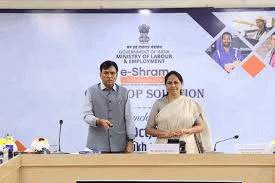
Why in news?
Recently, the Central Government introduced the eShram-One Stop Solution platform, which consolidates 12 welfare schemes aimed at benefiting workers in the unorganised sector. This initiative, launched in 2021, is intended to build a National Database of Unorganised Workers (NDUW) in India. The primary objective is to register various categories of unorganised workers, including construction laborers, migrant workers, street vendors, and domestic help.
Benefits of eShram card:
- Workers who sign up on the eShram portal get an eShram card, which is a unique ID made up of 12 digits.
- This card comes with important benefits, such as:
- Accident insurance coverage of Rs 2 lakh in case of death or permanent disability.
- Rs 1 lakh for partial disability.
Welfare Schemes for eShram Registered Workers:
- Pradhan Mantri Shram Yogi Maan-Dhan Yojana (PM-SYM)
- National Pension Scheme for Traders and Self-employed Persons (NPS)
- Pradhan Mantri Jeevan Jyoti Yojana (PMJJBY)
- Pradhan Mantri Suraksha Bima Yojana (PMSBY)
- Atal Pension Yojana
- Public Distribution System (PDS)
- Pradhan Mantri Awaas Yojana – Gramin (PMAY-G)
- National Social Assistance Programme (NSAP) - Old Age Protection
- Ayushman Bharat-Pradhan Mantri Jan Arogya Yojana (AB-PMJAY)
- Pradhan Mantri Kisan Mandhan Yojana
- National Safai Karamcharis Finance and Development Corporation (NSKFDC)
- Self Employment Scheme for Rehabilitation of Manual Scavengers
- Health Insurance Scheme for Weavers (HIS)

SC Allows States to Regulate Industrial Alcohol

Why in news?
Recently, the Supreme Court's nine-judge Constitution bench ruled in an 8:1 decision that states have the right to regulate industrial alcohol, overturning a 1990 ruling that favored central government control.
What is the Constitutional Bench of the Supreme Court?
- About: A Constitution Bench is composed of five or more judges convened for specific legal issues, not formed routinely.
- Circumstances for Formation: Article 145(3) states that a minimum of five judges is necessary to decide cases involving significant constitutional questions.
- Conflicting Judgments: When there are conflicting decisions from different three-judge benches, a larger bench is established to resolve these conflicts.
What has the SC Bench Ruled on Industrial Alcohol?
- Expanding the Definition: The ruling overturned the 1990 decision in Synthetics & Chemicals vs State of Uttar Pradesh, which restricted the term "intoxicating liquor" to consumable alcohol and prohibited states from taxing industrial alcohol.
- Majority Opinion: The Bench clarified that the definition includes all types of alcohol that can harm public health, not just consumable beverages.
- Emphasis on Misuse: The court noted that substances like alcohol, opium, and drugs can be misused, asserting that Parliament cannot override state authority over intoxicating liquors.
- Dissenting Opinion: Justice B.V. Nagarathna disagreed, arguing that the term “industrial alcohol” should not be included in Entry 8 – List II, as it could misinterpret legislative intent regarding alcohol regulation.
What are the Other Similar Cases?
- Ch Tika Ramji v State of UP Case, 1956: The SC upheld legislation in Uttar Pradesh regulating the sugarcane industry, affirming states' rights to legislate even with central laws present.
- Synthetics & Chemicals Ltd v. State of Uttar Pradesh Case, 1989: A 7-judge Constitution Bench ruled that states' powers under Entry 8 of the State List were limited to regulating intoxicating liquors, excluding industrial alcohol.
What will be the Impact of this Ruling?
- Pending Litigations: The ruling will significantly affect ongoing litigations related to taxes or fees imposed by states, as previous judgments had suspended such levies.
- State Regulatory Power: States now have the authority to regulate and tax industrial alcohol, likely leading to diverse tax systems across different states.
- Revenue Generation: This ruling enables states to boost revenue, especially important after the implementation of GST, which previously restricted their ability to tax industrial alcohol.
- Industry Perspective: Industry groups view this ruling favorably, believing it clarifies regulatory frameworks and taxation for the Indian Made Foreign Liquor (IMFL) sector, thus reducing uncertainty for manufacturers.
- Operational Costs: Increased state taxes on industrial alcohol may raise operational costs for industries that rely on it, potentially creating pricing disparities.
Conclusion
- The Supreme Court's recent decision empowers states to regulate industrial alcohol, allowing them to levy taxes and improve local control over production and distribution.
- This ruling enhances states' financial independence post-GST, supports stricter regulations to combat illegal consumption, and underscores state rights in managing public health impacts.
Freebies Culture in India
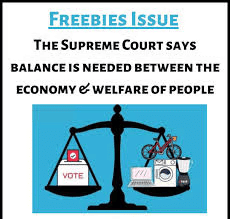
Why in News?
The issue of freebies during electoral campaigns remains a contentious topic in Indian politics. A recent survey across various Indian cities indicates that urban Indians have mixed feelings about freebies, especially as discussions on fiscal responsibility intensify. The Prime Minister's critique of "revdi culture" in 2022 has spurred debates on the sustainability and ethical considerations surrounding election-driven freebies. Freebies are typically short-term handouts aimed at appealing to voters, lacking the sustainable impact found in welfare policies that aim to foster long-term economic and social well-being.
What is the Difference between Freebies and Welfare Policies?
- The Reserve Bank of India (RBI) described freebies in its 2022 report as "public welfare measures provided free of charge."
- Freebies often target short-term relief and can include items like free laptops, televisions, bicycles, electricity, and water, often presented as electoral incentives.
- They are frequently criticized for potentially fostering dependency rather than encouraging sustainable development.
- In contrast, welfare schemes are comprehensive initiatives designed to elevate target populations by improving their living standards and access to resources.
- Welfare programs are grounded in the Directive Principles of State Policy (DPSPs) and are aligned with social justice and equity goals, aiming for positive societal impacts and long-term human development.
- Examples of Welfare Policies:
- Public Distribution System (PDS)
- Mahatma Gandhi National Rural Employment Guarantee Act (MGNREGA)
- Mid-Day Meal (MDM) programs
What are the Positive Aspects Related to Freebies?
- Uplifting the Lower Class: In states with lower development levels and higher poverty rates, freebies can be essential in supporting and uplifting disadvantaged communities.
- Foundation for Welfare Schemes: Freebies often include pre-election promises and essential services mandated by the government to fulfill its constitutional obligations under the Directive Principles of State Policy.
- The Mid-Day Meal Scheme, initiated in Tamil Nadu in 1956, later became a national program.
- NT Rama Rao’s Rs. 2/kg rice scheme in Andhra Pradesh laid the groundwork for the current National Food Security Program.
- Telangana’s Rythu Bandhu and Odisha’s KALIA schemes served as precursors to the Pradhan Mantri Kisan Samman Nidhi (PM-KISAN) for farmer support.
- Boosting Industries: Initiatives in states like Tamil Nadu and Bihar, which provide women with sewing machines, saris, and cycles, can stimulate local industries and be regarded as productive investments.
- Enhanced Social Welfare: Freebies can help vulnerable and low-income groups by providing essential goods and services such as food, healthcare, and education.
- Free bus passes for women can encourage workforce participation, contributing to economically stable households and promoting women's empowerment.
- Increased Access to Education and Skill Development: By distributing items like bicycles and laptops, governments can enhance educational access, particularly in rural areas.
- For instance, the distribution of laptops by the Uttar Pradesh government aims to improve students' productivity, knowledge, and skills.
- A report by NITI Aayog noted that providing bicycles to schoolgirls in Bihar and West Bengal markedly reduced dropout rates and enhanced attendance and learning outcomes.
- Strengthening Political Engagement and Public Trust: Freebies may promote political awareness and enhance public trust by showing government responsiveness to citizens’ needs.
- According to a study by the Centre for Policy Research, states like Uttar Pradesh and Tamil Nadu saw increased public satisfaction with governance and higher voter turnout due to these initiatives.
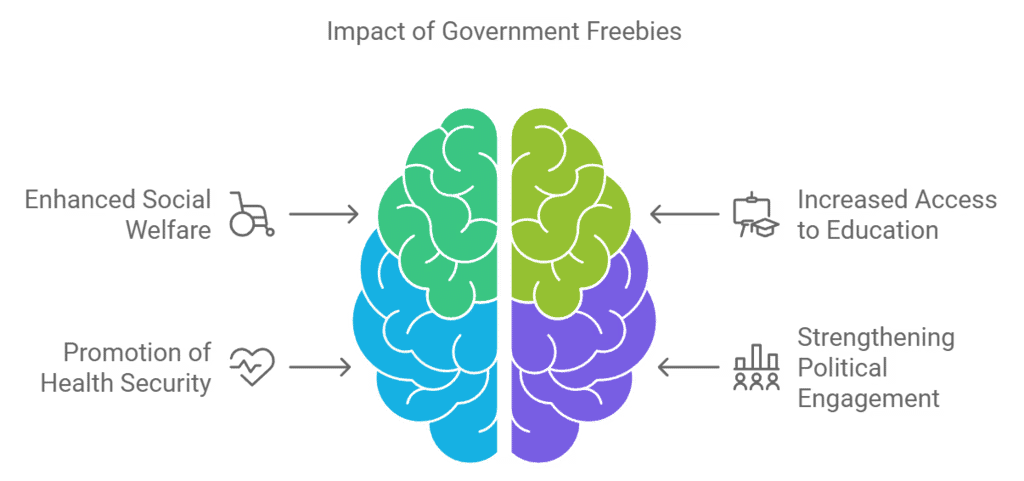
What are the Negative Aspects Related to Freebies?
- Burden on Public Finances: The cost of distributing freebies can significantly strain public finances, with expenses constituting between 0.1% to 2.7% of gross state domestic product (GSDP) in various states.
- Some states, like Andhra Pradesh and Punjab, allocate over 10% of their revenue to subsidies.
- Against Free and Fair Election: The promise of irrational freebies using public funds before elections can unduly influence voters, disrupting electoral fairness and integrity.
- This practice is viewed as unethical, akin to bribery.
- Distortion in Resource Allocation: Freebies can lead to misallocation of resources, diverting funds from productive sectors and hindering economic growth and essential infrastructure development.
- For example, subsidies like laptops in Uttar Pradesh have been criticized for overshadowing urgent educational needs.
- Dependency Culture: Freebies may cultivate a dependency culture, which can discourage self-reliance and entrepreneurship, essential for sustainable economic growth.
- Reduced Accountability: Such practices can diminish accountability in governance, as political parties may resort to freebies to divert attention from systemic issues and failures in public service delivery.
- Environmental Impact: Freebies can lead to overconsumption of natural resources, diminishing conservation efforts and increasing pollution.
- For instance, free electricity for farmers in Punjab has resulted in excessive resource use and a decline in service quality from power utilities.
What is the Ethical Perspective on Freebies?
- Government Moral Responsibility: The government has an ethical obligation to uplift marginalized populations. Providing welfare measures is part of fulfilling this duty, particularly in addressing inequality.
- However, there is a delicate balance between genuine welfare and populism aimed at securing votes.
- Accountability and Transparency: Governments must ensure that such programs are transparent, targeted, and sustainable, avoiding misuse of public funds for political gain.
- Distortion of Incentives: Freebies can distort market dynamics, creating disincentives for work and productivity.
- Ethical governance should promote self-sufficiency rather than dependency, encouraging citizens to engage in productive economic activities.
- Citizen Responsibility: While people may benefit from freebies, there is an expectation for responsible behavior regarding financial management and seeking productive means to improve their circumstances.
- Over-reliance on government aid can impede personal and community growth.
- Equity and Justice: The allocation of freebies should be assessed from an equity perspective, determining whether these measures favor certain groups and effectively address the root causes of poverty.
- Public Perception and Social Values: The culture of freebies can influence societal values, potentially fostering a mindset of entitlement rather than responsibility, raising long-term concerns for civic engagement and community welfare.
Way Forward
- Strengthening Democratic Institutions: Focus on enhancing the autonomy of the Election Commission of India (ECI) to ensure effective monitoring and regulation of freebies during elections.
- Enhancing Voter Awareness: Promoting voter education initiatives can empower individuals to make informed choices based on long-term development goals instead of short-term incentives.
- Shifting Policy Focus: Encourage political parties to prioritize sustainable, long-term policy planning and development over populist promises, shifting public discourse toward meaningful development.
- Ensuring Transparent Governance: Emphasizing transparency and accountability in implementing welfare schemes can reduce corruption and ensure that intended beneficiaries receive the necessary support, bolstering public trust in government initiatives.
- Strengthening Social Security Systems: Rather than relying heavily on freebies, the government should enhance social security mechanisms, including quality healthcare, robust education systems, job creation, and comprehensive poverty alleviation programs that effectively address the root causes of socio-economic inequality.
Conclusion:
- The complicated feelings about freebies among urban Indians show the conflict between electoral promises and fiscal responsibility.
- Voters want a good balance in welfare provisions, but political parties struggle to make their campaigns match with sustainable economic goals.
- As India's democracy changes, the ongoing discussion about freebies will likely affect welfare and fiscal policies in future state and national elections.
Bail Provisions under PMLA
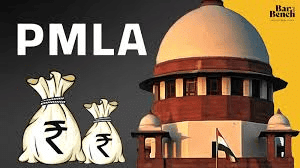
Why in News?
The Supreme Court recently held that constitutional courts cannot allow provisions of the Prevention of Money Laundering Act to become instruments in the hands of the Enforcement Directorate to continue incarceration for a long time.
The Prevention of Money-Laundering Act (PMLA)
- The Prevention of Money Laundering Act (PMLA) was passed by the Parliament of India in 2002 under Article 253 of the Constitution to stop money laundering and to allow for the seizure of property that comes from or is involved in money laundering.
- The PMLA and the associated rules became effective in 2005, with further changes made in 2009 and 2012.
- The Director of the Financial Intelligence Unit - India (FIU-IND) and the Director of Enforcement were given special and shared powers under the relevant sections of the Act to carry out its provisions.
- The main crime under the PMLA involves money laundering that results from illegal activities such as drug trafficking, terrorism, and corruption.
Bail Provisions under the Law
- Section 45 of the PMLA relates to bail. It starts by stating that no court is allowed to grant bail for crimes under this law.
- The wording in this section indicates that getting bail is not the usual practice but rather an exception in the context of the PMLA.
- The law requires that the public prosecutor be consulted for all bail requests. If the prosecutor is against granting bail, the court must conduct a twin test.
- The two conditions that must be checked are:
- There are reasonable grounds to believe that the accused is not guilty of the crime.
- The accused is not likely to commit any crime while on bail.
- Similar rules are found in other laws that address serious crimes, such as:
- Section 36AC of The Drugs and Cosmetics Act, 1940.
- Section 37 of The Narcotic Drugs and Psychotropic Substances Act, 1985.
- Section 43D(5) of the Unlawful Activities Prevention Act, 1967.
Supreme Court’s Take on the Law
- The court set strict bail conditions in response to concerns from the ED about possible interference with witnesses or evidence.
- The conditions include:
- Regularly appearing before the deputy director of the ED.
- Meeting with the investigating officer handling the scheduled offences.
- Not contacting any witnesses or victims connected to the scheduled offences.
- Fully cooperating with the trial process and not requesting any adjournments.
Conclusion
- The provisions of the PMLA have been questioned, yet the Supreme Court has repeatedly confirmed their legitimacy.
- There is a strong emphasis on the importance of fighting money laundering.
- Maintaining a balance between the powers of law enforcement and the rights of individuals is a crucial part of this legal system.
Internal Democracy in Political Parties
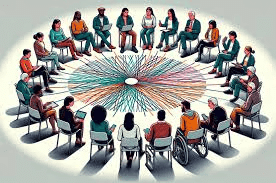
Why in News?
India’s multi-party democracy frequently centers around individual charisma, raising the question of whether the Election Commission can ensure internal democracy within political parties.
Reasons for Lack of Internal Democracy:
- Weak Organizational Structures: Many political parties do not have clear methods for choosing leaders, which leads to a concentration of power.
- Dynastic Politics: Leadership is often held by a few individuals or families, which restricts chances for new and diverse leaders to emerge.
- Limited Participation of Members: Intra-party elections are often just for show, causing party members to feel disillusioned and disconnected from the party.
Need for Internal Democracy:
- Nurturing a Culture of Democracy: Parties that have strong internal democratic practices are more likely to support democratic values when they are in power, leading to better transparency, accountability, and responsiveness.
- Leadership Development: Parties that are structured democratically promote competition and merit, allowing younger and more talented leaders to advance.
- Empowering Grassroots Members: Internal democracy makes sure that the opinions of party workers and regular members are included in decision-making processes.
Election Commission’s Guidelines:
- Representation of the People Act: The Election Commission of India (ECI) has regularly issued guidelines under Section 29A of the Representation of the People Act, 1951, reminding parties to hold elections and ensure leadership is updated every five years.
- No Permanent President for a Party: The ECI opposes the idea of a 'permanent president' in political parties, as it goes against the principles of leadership change and fair representation.
- Party Constitution: According to the ECI's rules for party registration, parties must provide a copy of their constitution when applying.
Concerns:
- De-Registration Only in Cases of Fraud: The Supreme Court ruled in 2002 that while the ECI can register political parties, it can only deregister them under specific situations.
- Power of De-Registration of Political Parties: The ECI has requested the Law Ministry for the authority to deregister parties in the past, but this proposal has not yet been put into action.
Way Ahead:
- Ensuring Internal Democracy: It is essential for improving the overall democratic system of the country.
- Need for Comprehensive Reform: Although the ECI has made efforts in this area, its authority is limited. There should be significant reforms, possibly through new laws, to give the ECI more power to enforce internal democracy effectively.
8 Years of Regional Connectivity Scheme (RCS) – UDAN

Why in News?
The UDAN scheme has completed 8 years of Implementation.
About
- The Regional Connectivity Scheme (RCS) – UDAN (Ude Desh Ka Aam Nagrik) is a component of India’s National Civil Aviation Policy (NCAP) 2016, launched by the Ministry of Civil Aviation (MoCA) in 2016, with a 10-year vision.
- It aims to improve infrastructure and connectivity in India, especially in remote and underserved regions.
- The first UDAN flight took off in 2017, connecting Shimla to New Delhi.
Features of the UDAN Scheme
A Market-Driven Approach: Airlines evaluate the demand on certain routes and submit their proposals during bidding rounds. The scheme encourages airlines to connect less accessible areas by providing Viability Gap Funding (VGF) and various incentives.
Support Mechanisms:- Airport Operators: They waive landing and parking charges for RCS flights, and the Airports Authority of India (AAI) does not levy Terminal Navigation Landing Charges (TNLC) on these flights.
- Union Government: For the first three years, excise duty on Aviation Turbine Fuel (ATF) purchased at RCS airports capped at 2%.
- State Governments: States have committed to reducing VAT on ATF to 1% or less for ten years and providing essential services such as security, fire services, and utility services at reduced rates.
Significance of the Scheme
- Fuelling Growth of the Aviation Industry: Over the last seven years, this scheme has led to the rise of many new and successful airlines.
- Promoting Tourism: Programs like UDAN 3.0 have created tourism routes that connect various locations in the Northeast, while UDAN 5.1 focuses on increasing helicopter services in hilly regions to boost tourism and local economies.
- Boosting Air Connectivity: RCS-UDAN has linked 34 states and Union Territories across India, with a total of 86 aerodromes operational, including ten in the Northeast and two heliports.
- Number of Airports Increased: The total number of operational airports in India has risen from 74 in 2014 to 157 in 2024, with plans to expand this to 350-400 by 2047.
- Airport Operators: They waive landing and parking fees for RCS flights, and the Airports Authority of India (AAI) does not charge Terminal Navigation Landing Charges (TNLC) for these flights.
- Union Government: For the first three years, the excise duty on Aviation Turbine Fuel (ATF) bought at RCS airports is limited to 2%.
- State Governments: States have agreed to lower VAT on ATF to 1% or less for ten years, and they provide necessary services like security and fire services at lower costs.
- The Regional Connectivity Scheme (RCS) – UDAN (Ude Desh Ka Aam Nagrik) is part of India’s National Civil Aviation Policy (NCAP), which was set up in 2016 by the Ministry of Civil Aviation (MoCA).
- This program has a vision that extends over ten years.
- Its primary aim is to improve infrastructure and connectivity throughout India, especially in remote and underdeveloped regions.
- The first UDAN flight took off in 2017, connecting Shimla with New Delhi.
|
164 videos|800 docs|1157 tests
|
















